Non-surgical interventions for treating osteoarthritis of the big toe joint
- PMID: 38884172
- PMCID: PMC11181457
- DOI: 10.1002/14651858.CD007809.pub3
Non-surgical interventions for treating osteoarthritis of the big toe joint
Abstract
Background: Osteoarthritis (OA) affecting the first metatarsophalangeal joint (hallux rigidus) is common and painful. Several non-surgical treatments have been proposed; however, few have been adequately evaluated. Since the original 2010 review, several studies have been published necessitating this update.
Objectives: To determine the benefits and harms of non-surgical treatments for big toe OA.
Search methods: We used standard, extensive Cochrane search methods. The latest search was February 2023.
Selection criteria: We included randomised trials that compared any type of non-surgical treatment versus placebo (or sham), no treatment (such as wait-and-see) or other treatment.
Data collection and analysis: We used standard Cochrane methods. The major outcomes were pain, function, quality of life, radiographic joint structure, adverse events and withdrawals due to adverse events. The primary time point was 12 weeks. We used GRADE to assess the certainty of evidence.
Main results: This update includes six trials (547 participants). The mean age of participants ranged from 32 to 62 years. Trial durations ranged from 4 to 52 weeks. Treatments were compared in single trials as follows: arch-contouring foot orthoses versus sham inserts; shoe-stiffening inserts versus sham inserts; intra-articular injection of hyaluronic acid versus saline (placebo) injection; arch-contouring foot orthoses versus rocker-sole footwear; peloid therapy versus paraffin therapy; and sesamoid mobilisation, flexor hallucis longus strengthening and gait training plus physical therapy versus physical therapy alone. Certainty of the evidence was limited by the risk of bias and imprecision. Meta-analysis was not performed due to the heterogeneity of interventions. We reported numerical data for the 12-week time point for the three trials that used a placebo/sham control group. Arch-contouring foot orthoses versus sham inserts One trial (88 participants) showed that arch-contouring foot orthoses probably lead to little or no difference in pain, function, or quality of life compared to sham inserts (moderate certainty). Mean pain (0-10 scale, 0 no pain) with sham inserts was 3.9 points compared to 3.5 points with arch-contouring foot orthoses; a difference of 0.4 points better (95% (CI) 0.5 worse to 1.3 better). Mean function (0-100 scale, 100 best function) with sham inserts was 73.3 points compared to 65.5 points with arch-contouring foot orthoses; a difference of 7.8 points worse (95% CI 17.8 worse to 2.2 better). Mean quality of life (-0.04-100 scale, 100 best score) with sham inserts was 0.8 points compared to 0.8 points with arch-contouring foot orthoses group (95% CI 0.1 worse to 0.1 better). Arch-contouring foot orthoses may show little or no difference in adverse events and withdrawal due to adverse events compared to sham inserts (low certainty). Adverse events (mostly foot pain) were reported in 6 out of 41 people with sham inserts and 4 out of 47 people with arch-contouring foot orthoses (RR 0.58, 95% CI 0.18 to 1.92). Withdrawals due to adverse events were reported in 0 out of 41 people with sham inserts and 1 out of 47 people with arch-contouring foot orthoses (Peto OR 6.58, 95% CI 0.13 to 331). Shoe-stiffening inserts versus sham inserts One trial (100 participants) showed that shoe-stiffening inserts probably lead to little or no difference in pain, function, or quality of life when compared to sham inserts (moderate certainty). Mean pain (0-100 scale, 0 no pain) with sham inserts was 63.8 points compared to 70.1 points with shoe-stiffening inserts; a difference of 6.3 points better (95% CI 0.5 worse to 13.1 better). Mean function (0-100 scale, 100 best function) with sham inserts was 81.0 points compared to 84.9 points with shoe-stiffening inserts; a difference of 3.9 points better (95% CI 3.3 worse to 11.1 better). Mean quality of life (0-100 scale, 100 best score) with sham inserts was 53.2 points compared to 53.3 points with shoe-stiffening inserts; a difference of 0.1 points better (95% CI 3.7 worse to 3.9 better). Shoe-stiffening inserts probably show little or no difference in adverse events (moderate-certainty) and may show little or no difference in withdrawal due to adverse events (low-certainty), compared to sham inserts. Adverse events (mostly foot pain, blisters, and spine/hip pain) were reported in 31 out of 51 people with sham inserts and 29 out of 49 people with shoe-stiffening inserts (RR 0.94, 95% CI 0.42 to 2.08). Withdrawals due to adverse events were reported in 1 out of 51 people with sham inserts and 2 out of 49 people with shoe-stiffening inserts (Peto OR 2.08, 95% CI 0.19 to 22.23). Hyaluronic acid versus placebo One trial (151 participants) showed that a single intra-articular injection of hyaluronic acid probably leads to little or no difference in pain or function compared to placebo (moderate certainty). Mean pain (0-100 scale, 0 no pain) with placebo was 72.5 points compared to 68.2 points with hyaluronic acid; a difference of 4.3 points worse (95% CI 2.1 better to 10.7 worse). Mean function (0-100 scale, 100 best function) was 83.4 points with placebo compared to 85.0 points with hyaluronic acid; a difference of 1.6 points better (95% CI 4.6 worse to 7.8 better). Hyaluronic acid may provide little or no difference in quality of life (0-100 scale, 100 best score) which was 79.9 points with placebo compared to 82.9 points with hyaluronic acid; a difference of 3.0 better (95% CI 1.4 worse to 7.4 better; low certainty). There may be fewer adverse events with hyaluronic acid compared to placebo. Adverse events (mostly pain at the injection site) were reported in 43 out of 76 people with placebo compared with 27 out of 75 people with hyaluronic acid (RR 0.64, 95% CI 0.44 to 0.91; low certainty). No participants withdrew from either group due to adverse events. The effects on radiographic joint structure were not reported in any study.
Authors' conclusions: The existing evidence regarding the benefits and harms of non-surgical treatments for big toe OA is limited. There is moderate-certainty evidence, based upon three single placebo/sham-controlled trials, that there are no clinically important benefits of arch-contouring foot orthoses, shoe-stiffening inserts, or a single intra-articular injection of hyaluronic acid. Further placebo-controlled trials are needed to evaluate the effectiveness of non-surgical treatments for big toe OA.
Trial registration: ClinicalTrials.gov https://clinicaltrials.gov/ct2/show/NCT04103814.
Copyright © 2024 The Cochrane Collaboration. Published by John Wiley & Sons, Ltd.
Conflict of interest statement
SEM has authored four randomised controlled trials included in this review; one of intra‐articular injection of hyaluronic acid versus placebo injection for big toe OA (Munteanu 2011), another of arch‐contouring foot orthoses versus rocker‐sole footwear for big toe OA (Menz 2016), another of shoe‐stiffening inserts versus sham inserts for big toe OA (Munteanu 2021), and another of arch‐contouring foot orthoses versus sham inserts for big toe OA (Paterson 2022). They did not perform study selection, data extraction, or risk of bias assessments, but did perform RevMan data entry and GRADE assessments (independent of a second reviewer (HBM)). They have been the principal recipient of funding from Australian Podiatry Education and Research Foundation (APERF) and Genzyme Australasia Pty. Ltd to support the trial of intra‐articular injection of hyaluronic acid versus placebo injection for big toe OA (Munteanu 2011). They have been the recipient of National Health and Medical Research Council (NHMRC) of Australia Project Grants (IDs: 1049085 and 1105244) used to support the trials of arch‐contouring foot orthoses versus rocker‐sole footwear for big toe OA (Menz 2016), and shoe‐stiffening inserts versus sham inserts for big toe OA (Munteanu 2021). The funders did not participate in the conduct of the reviews.
AKB has authored one randomised controlled trial included in this review (shoe‐stiffening inserts versus sham inserts for big toe OA (Munteanu 2021)). They did perform study selection and data extraction (independent of second reviewers (MC and MJL respectively)), but did not perform risk of bias or GRADE assessments.
MJL has received no funding and has no interests to declare related to this review.
MC has received no funding and has no interests to declare related to this review.
KBL has authored two randomised controlled trials included in this review; one of intra‐articular injection of hyaluronic acid versus placebo injection for big toe OA (Munteanu 2011), and another of shoe‐stiffening inserts versus sham inserts for big toe OA (Munteanu 2021). They did not perform study selection, data extraction, or GRADE assessments, but did perform risk of bias assessments (independent of a second reviewer (MC)). They have been the principal recipient of funding from APERF and Genzyme Australasia Pty. Ltd to support the trial of intra‐articular injection of hyaluronic acid versus placebo injection for big toe OA (Munteanu 2011). They have been the recipient of a NHMRC of Australia Project Grant (ID: 1105244) used to support the trial of shoe‐stiffening inserts versus sham inserts for big toe OA (Munteanu 2021). The funders did not participate in the conduct of the reviews.
HBM has authored four randomised controlled trials included in this review; one of intra‐articular injection of hyaluronic acid versus placebo injection for big toe OA (Munteanu 2011), another of arch‐contouring foot orthoses versus rocker‐sole footwear for big toe OA (Menz 2016), another of shoe‐stiffening inserts versus sham inserts for big toe OA (Munteanu 2021), and another of arch‐contouring foot orthoses versus sham inserts for big toe OA (Paterson 2022). They did not perform study selection, data extraction, or risk of bias assessments, but did perform GRADE assessments (independent of a second reviewer (SEM)). They have been the principal recipient of funding from APERF and Genzyme Australasia Pty. Ltd to support the trial of intra‐articular injection of hyaluronic acid versus placebo injection for big toe OA (Munteanu 2011). They have been the principal recipient of NHMRC of Australia Project Grants (IDs: 1049085 and 1105244) used to support the trials of arch‐contouring foot orthoses versus rocker‐sole footwear for big toe OA (Menz 2016), and shoe‐stiffening inserts versus sham inserts for big toe OA (Munteanu 2021). They have been a recipient of a NHMRC of Australia Senior Research Fellowship (ID: 1135995). The funders did not participate in the conduct of the reviews.
Figures
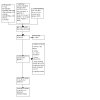
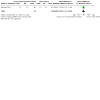
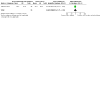
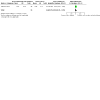
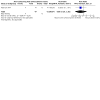
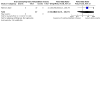


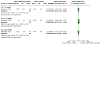

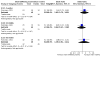
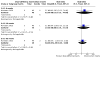
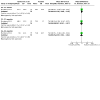

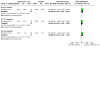
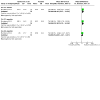
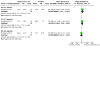

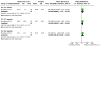
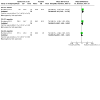
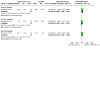
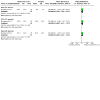
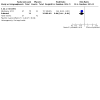
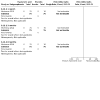
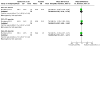
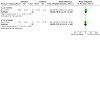
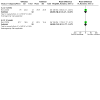


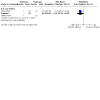
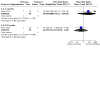


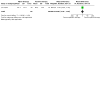
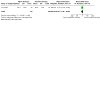

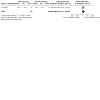
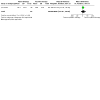
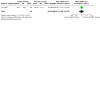
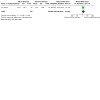
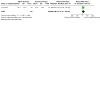
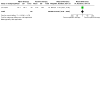
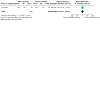



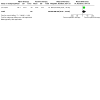
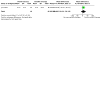

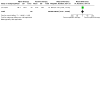
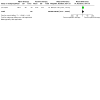


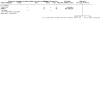


Update of
-
Interventions for treating osteoarthritis of the big toe joint.Cochrane Database Syst Rev. 2010 Sep 8;(9):CD007809. doi: 10.1002/14651858.CD007809.pub2. Cochrane Database Syst Rev. 2010. Update in: Cochrane Database Syst Rev. 2024 Jun 17;6:CD007809. doi: 10.1002/14651858.CD007809.pub3. PMID: 20824867 Updated.
References
References to studies included in this review
Çıra 2022 {published and unpublished data}
-
- Çıra S, Yılmaz R, Karpuz S, Yılmaz H, Akkurt HE. Comparison of the efficacies of peloid therapy and paraffin treatment given as an adjuncts to exercise therapy in patients with hallux rigidus: a randomized, uncontrolled, prospective study. International Journal of Biometeorology 2022;66(8):1699-710. [DOI: 10.1007/s00484-022-02311-4] - DOI - PubMed
Menz 2016 {published data only}
-
- Menz HB, Levinger P, Tan JM, Auhl M, Roddy E, Munteanu SE. Rocker-sole footwear versus prefabricated foot orthoses for the treatment of pain associated with first metatarsophalangeal joint osteoarthritis: study protocol for a randomised trial. BMC Musculoskeletal Disorders 2014;15:86. [DOI: 10.1186/1471-2474-15-86] - DOI - PMC - PubMed
Munteanu 2011 {published and unpublished data}
-
- Munteanu SE, Menz HB, Zammit GV, Landorf KB, Handley CJ, Elzarka A, et al. Efficacy of intra-articular hyaluronan (Synvisc(R)) for the treatment of osteoarthritis affecting the first metatarsophalangeal joint of the foot (hallux limitus): study protocol for a randomised placebo controlled trial. Journal of Foot Ankle Research 2009;2:2. [DOI: 10.1186/1757-1146-2-2] - DOI - PMC - PubMed
-
- Munteanu SE, Zammit GV, Menz HB, Landorf KB, Handley CJ, Elzarka A, et al. Effectiveness of intra-articular hyaluronan (Synvisc, hylan G-F 20) for the treatment of first metatarsophalangeal joint osteoarthritis: a randomised placebo-controlled trial. Annals of the Rheumatic Diseases 2011;70(10):1838‐41. [DOI: 10.1136/ard.2011.153049] - DOI - PubMed
Munteanu 2021 {published and unpublished data}
-
- Munteanu SE, Landorf KB, McClelland JA, Roddy E, Cicuttini FM, Shiell A, et al. Shoe-stiffening inserts for first metatarsophalangeal joint osteoarthritis (the SIMPLE trial): study protocol for a randomised controlled trial. Trials 2017;18(1):198. [DOI: 10.1186/s13063-017-1936-1] - DOI - PMC - PubMed
Paterson 2022 {published data only}
-
- Paterson KL, Hinman RS, Metcalf BR, McManus F, Jones SE, Menz HB, et al. Effect of foot orthoses vs sham insoles on first metatarsophalangeal joint osteoarthritis symptoms: a randomized controlled trial. Osteoarthritis and Cartilage 2022;30(7):956-64. [DOI: 10.1016/j.joca.2022.01.014] - DOI - PubMed
Shamus 2004 {published data only}
-
- Shamus J, Shamus E, Gugel RN, Brucker BS, Skaruppa C. The effect of sesamoid mobilization, flexor hallucis strengthening, and gait training on reducing pain and restoring function in individuals with hallux limitus: a clinical trial. Journal of Orthopaedic and Sports Physical Therapy 2004;34(7):368‐76. [DOI: 10.2519/jospt.2004.34.7.368] - DOI - PubMed
References to studies excluded from this review
Emami Razavi 2021 {published data only (unpublished sought but not used)}
-
- Emami Razavi SZ, Azadvari M, Fateh HR, Ghahvechi Akbari M, Kazemi S, Rezaee E. Short-term efficacy of ultrasonographic guidance for intra-articular corticosteroid injection in hallux rigidus: a single-blind randomized controlled trial. Foot & Ankle International 2021;42(11):1410-8. [DOI: 10.1177/10711007211015988] - DOI - PubMed
Paterson 2019 {published data only}
-
- Paterson KL, Hinman RS, Metcalf B, Campbell P, Menz HB, Hunter D, et al. A multi-faceted, non-drug, non-surgical intervention compared to usual GP care for symptomatic radiographic osteoarthritis of the first metatarsophalangeal joint: a randomised controlled feasibility study. Osteoarthritis and Cartilage 2019;27(Supp 1):S440-1. [DOI: 10.1016/j.joca.2019.02.471] - DOI
References to studies awaiting assessment
Bhimani 2022 {published data only}
-
- Bhimani R, Sornsakrin P, Vrolyk MA, Lubberts B, Guss D, DiGiovanni CW, et al. Use of flexible carbon fiber insoles for hallux rigidus: a randomized controlled trial. Foot & Ankle Orthopaedics (American Orthopaedic Foot and Ankle Society Annual Meeting, September 14-17, 2022, Quebec City, Quebec, Canada) 2022;7(4):no pagination. [DOI: ]
References to ongoing studies
IRCT20210308050637N1 {published data only}https://trialsearch.who.int/Trial2.aspx?TrialID=IRCT20210308050637N1
-
- IRCT20210308050637N1. Comparison of the effectiveness of corticosteroid injection(methylprednisolone) with dextrose 50% (prolotherapy) in osteoarthritis of the first metatarsophalangeal joint. https://irct.behdasht.gov.ir/trial/54899 (date received 14 March 2021). [ICTRP: https://trialsearch.who.int/Trial2.aspx?TrialID=IRCT20210308050637N1]
NCT04103814 {published data only}
-
- NCT04103814. Effect of topical CBD cream for degenerative hallux disorders. https://clinicaltrials.gov/search?term=NCT04103814 (date received 25 September 2019). [CLINICALTRIALS.GOV: https://clinicaltrials.gov/ct2/show/NCT04103814]
Additional references
Bergin 2012
-
- Bergin SM, Munteanu SE, Zammit GV, Nikolopoulos N, Menz HB. Impact of first metatarsophalangeal joint osteoarthritis on health-related quality of life. Arthritis Care & Research 2012;64(11):1691-8. - PubMed
Brosseau 2003
Conaghan 2019
Covidence 2023 [Computer program]
-
- Covidence systematic review software. Melbourne, Australia: Veritas Health Innovation, 2023. [www.covidence.org]
Creamer 1997
Deeks 2019
-
- Deeks JJ, Higgins JPT, Altman DG. Chapter 10: Analysing data and undertaking meta-analyses. In: Higgins JPT, Thomas J, Chandler J, Cumpston M, Li T, Page MJ, et al (editors). In: Cochrane Handbook for Systematic Reviews of Interventions. Version 6.0 (updated July 2019). Cochrane, 2019. Available from www.training.cochrane.org/handbook/archive/v6.0.
Egger 1997
GRADEpro GDT [Computer program]
-
- GRADEpro GDT. Hamilton (ON): McMaster University (developed by Evidence Prime), (accessed 3 August 2021). Available at gradepro.org.
Grogan 2009
-
- Grogan KA, Chang TJ, Salk RS. Update on viscosupplementation in the treatment of osteoarthritis of the foot and ankle. Clinics in Podiatric Medicine and Surgery 2009;26(2):199-204. - PubMed
Guedes 2018
-
- Guedes V, Castro JP, Brito I. Topical capsaicin for pain in osteoarthritis: a literature review. Reumatologia Clinica 2018;14(1):40-5. - PubMed
Higgins 2019a
-
- Higgins JPT, Savović J, Page MJ, Elbers RG, Sterne JAC. Chapter 8: Assessing risk of bias in a randomized trial. In: Higgins JPT, Thomas J, Chandler J, Cumpston M, Li T, Page MJ, et al (editors). Cochrane Handbook for Systematic Reviews of Interventions version 6.0 (updated July 2019). Cochrane, 2019. Available from www.training.cochrane.org/handbook/archive/v6.0.
Higgins 2019b
-
- Higgins JPT, Li T, Deeks JJ (editors). Chapter 6: Choosing effect measures and computing estimates of effect. In: Higgins JPT, Thomas J, Chandler J, Cumpston M, Li T, Page MJ, et al (editors). Cochrane Handbook for Systematic Reviews of Interventions version 6.0 (updated July 2019). Cochrane, 2019. Available from www.training.cochrane.org/handbook/archive/v6.0.
Higgins 2019c
-
- Higgins JPT, Eldridge S, Li T. Chapter 23: Including variants on randomized trials. In: Higgins JPT, Thomas J, Chandler J, Cumpston M, Li T, Page MJ, et al (editors). Cochrane Handbook for Systematic Reviews of Interventions version 6.0 (updated July 2019). Cochrane 2019. Available from www.training.cochrane.org/handbook/archive/v6.0.
Keenan 2019
-
- Keenan AM, Munteanu SE. Chapter 4: Osteoarthritis. In: Helliwell P, Backhouse M, SIddle H, editors(s). Foot and Ankle in Rheumatology. Oxford, United Kingdom: Oxford University Press, 2019:53-65.
Lefebvre 2019
-
- Lefebvre C, Glanville J, Briscoe S, Littlewood A, Marshall C, Metzendorf M-I, et al. Chapter 4: Searching for and selecting studies. In: Higgins JPT, Thomas J, Chandler J, Cumpston M, Li T, Page MJ, et al (editors). Cochrane Handbook for Systematic Reviews of Interventions version 6.0 (updated July 2019). Cochrane, 2019. Available from www.training.cochrane.org/handbook/archive/v6.0.
Maddali Bongi 2014
-
- Maddali Bongi S, Del Rosso A, Cavigli E, Ferretti B, Matucci Cerinic M. A comparison of two podiatric protocols for metatarsalgia in patients with rheumatoid arthritis and osteoarthritis. Clinical and Experimental Rheumatology 2014;32(6):855-63. - PubMed
Menz 2015
-
- Menz HB, Roddy E, Marshall M, Thomas MJ, Rathod T, Myers H, et al. Demographic and clinical factors associated with radiographic severity of first metatarsophalangeal joint osteoarthritis: cross-sectional findings from the Clinical Assessment Study of the Foot. Osteoarthritis and Cartilage 2015;23(1):77-82. - PMC - PubMed
Menz 2020
-
- Menz HB, Auhl M, Tan JM, Levinger P, Roddy E, Munteanu SE. Comparative responsiveness of outcome measures for the assessment of pain and function in osteoarthritis of the first metatarsophalangeal joint. Arthritis Care & Research 2020;72(5):679-84. - PubMed
NICE guideline [NG226]
-
- NICE. Osteoarthritis in over 16s: diagnosis and management. https://www.nice.org.uk/guidance/ng226 (accessed prior to 23 May 2024). [https://www.nice.org.uk/guidance/ng226]
Norman 2003
-
- Norman GR, Sloan JA, Wyrwich KW. Interpretation of changes in health-related quality of life: the remarkable universality of half a standard deviation. Medical Care 2003;41(5):582-92. - PubMed
Page 2021
-
- Page MJ, McKenzie JE, Bossuyt PM, Boutron I, Hoffmann TC, Mulrow CD, et al, . The PRISMA 2020 statement: an updated guideline for reporting systematic reviews. Journal of Clinical Epidemiology 2021;134:178-89. - PubMed
Paterson 2019
-
- Paterson KL, Gates L. Clinical assessment and management of foot and ankle osteoarthritis: a review of current evidence and focus on pharmacological treatment. Drugs & Aging 2019;36(3):203-11. - PubMed
Prinsen 2014
-
- Prinsen CAC, Vohra S, Rose MR, KIng-Jones S, Ishaque S, Bhaloo Z, et al. Core outcome measures in effectiveness trials (COMET) initiative: protocol for an international Delphi study to achieve consensus on how to select outcome measurement instruments for outcomes included in a ‘core outcome set’. BMC Trials 2014;15:247. - PMC - PubMed
RevMan 2014 [Computer program]
-
- Review Manager (RevMan). Version 5.3.5. Copenhagen: The Nordic Cochrane Centre, The Cochrane Collaboration, 2014.
Roddy 2015
-
- Roddy E, Thomas MJ, Marshall M, Rathod T, Myers H, Menz HB, et al. The population prevalence of symptomatic radiographic foot osteoarthritis in community-dwelling older adults: cross-sectional findings from the clinical assessment study of the foot. Annals of the Rheumatic Diseases 2015;74(1):156-63. - PMC - PubMed
Roddy 2018
Rosenbloom 2011
-
- Rosenbloom KB. Pathology-designed custom molded foot orthoses. Clinics in Podiatric Medicine and Surgery 2011;28(1):171-87. - PubMed
Schünemann 2019a
-
- Schünemann HJ, Higgins JPT, Vist GE, Glasziou P, Akl EA, Skoetz N, et al. Chapter 14: Completing ‘Summary of findings’ tables and grading the certainty of the evidence. In: Higgins JPT, Thomas J, Chandler J, Cumpston M, Li T, Page MJ, et al (editors). Cochrane Handbook for Systematic Reviews of Interventions version 6.3 (updated February 2022). Cochrane, 2022. Available from www.training.cochrane.org/handbook/archive/v6.3.
Schünemann 2019b
-
- Schünemann HJ, Vist GE, Higgins JPT, Santesso N, Deeks JJ, Glasziou P, et al. Chapter 15: Interpreting results and drawing conclusions. In: Higgins JPT, Thomas J, Chandler J, Cumpston M, Li T, Page MJ, et al (editors). Cochrane Handbook for Systematic Reviews of Interventions version 6.3 (updated February 2022). Cochrane, 2022. Available from www.training.cochrane.org/handbook/archive/v6.3.
Sharma 2014
-
- Sharma CV, Mehta V. Paracetamol: mechanisms and updates. Continuing Education in Anaesthesia Critical Care & Pain 2014;14(4):153-8.
Sterne 2019
-
- Sterne JAC, Savović J, Page MJ, Elbers RG, Blencowe NS, Boutron I, et al. A revised tool for assessing risk of bias in randomized trials. British Medical Journal 2019;366:I4898. - PubMed
Tsvetkova 2015
-
- Tsvetkova E, Denisov L, Nasonov E, Menshikova I, Shmidt E, Goryachev D. Hyaluronic acid in osteoarthritis (OA) of small joints - the results of multicenter randomized placebo-controlled 12-months study. Annals of the Rheumatic Diseases 2015;74:1185. [JOURNAL WEB SITE: https://ard.bmj.com/content/74/Suppl_2/1185.1.info]
Vane 1971
-
- Vane JR. Inhibition of prostaglandin synthesis as a mechanism of action for aspirin-like drugs. Nature: New Biology 1971;231(25):232-5. - PubMed
Whittaker 2020
-
- Whittaker GA, Munteanu SE, Roddy E, Menz HB. Measures of foot pain, foot function, and general foot health. Arthritis Care & Research 2020;72 Suppl 10:294-320. - PubMed
References to other published versions of this review
Publication types
MeSH terms
Substances
Associated data
LinkOut - more resources
Full Text Sources

